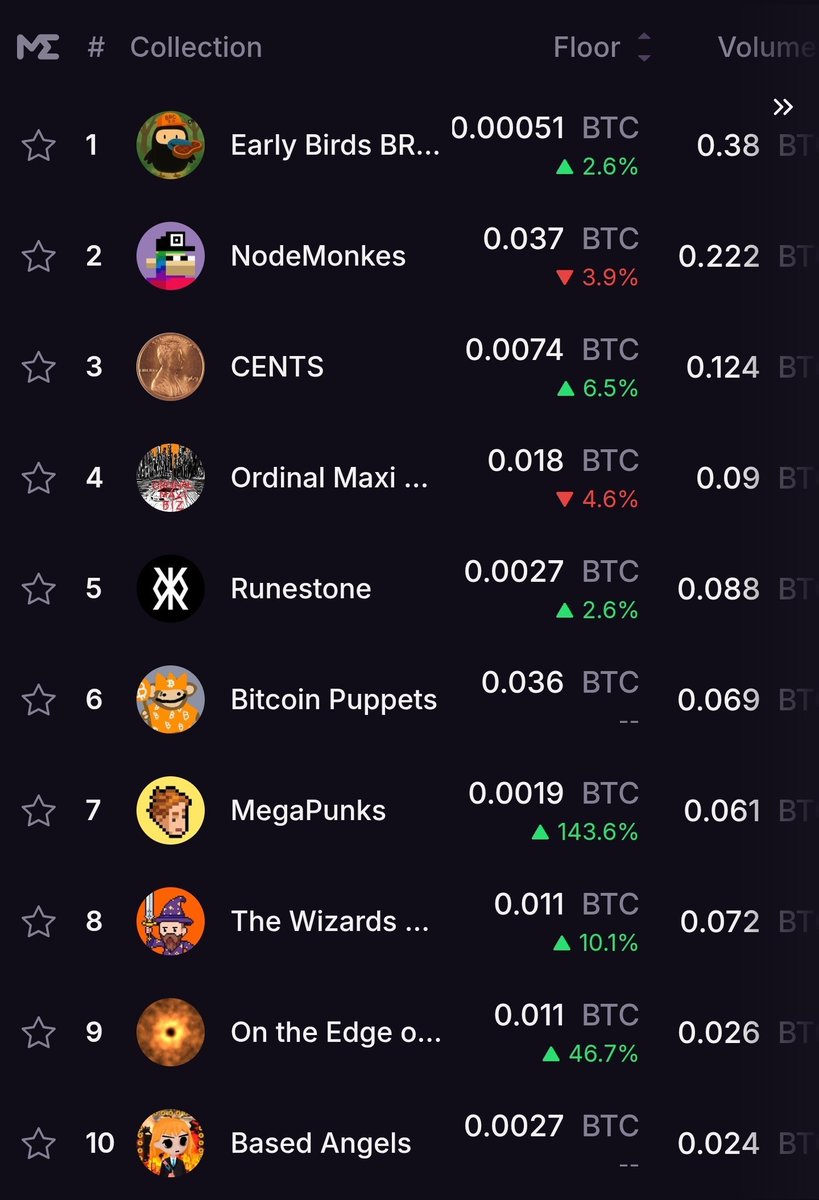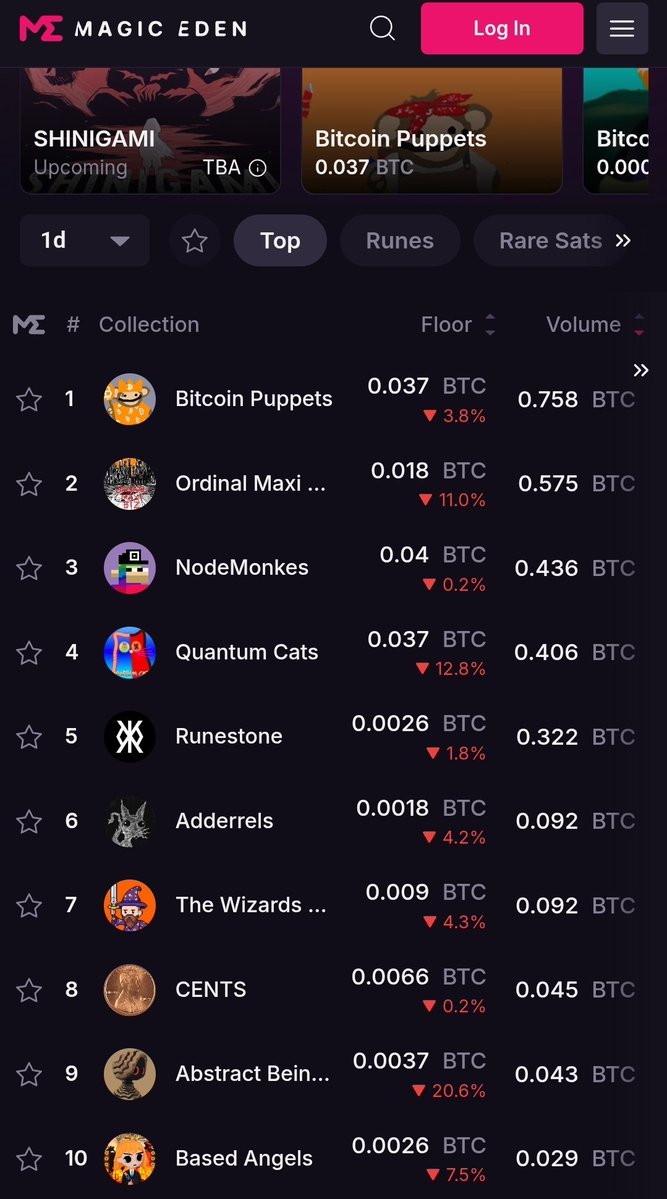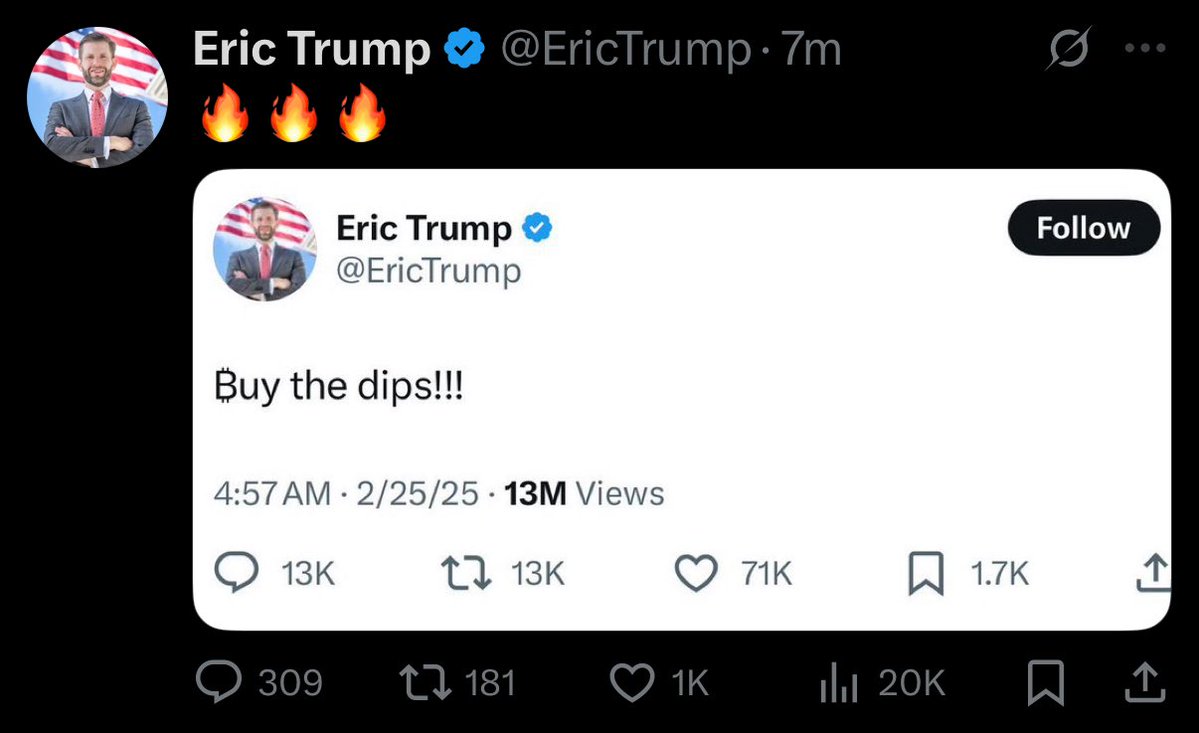This token isn’t available on the OKX Exchange. You can trade it on OKX DEX instead.

btc
batcat price

Cifp3G...Kg5F
$0.00011833
-$0.00920
(-98.73%)
Price change for the last 24 hours

How are you feeling about btc today?
Share your sentiments here by giving a thumbs up if you’re feeling bullish about the coin or a thumbs down if you’re feeling bearish.
Vote to view results
btc market info
Market cap
Market cap is calculated by multiplying the circulating supply of a coin with its latest price.
Market cap = Circulating supply × Last price
Market cap = Circulating supply × Last price
Network
Underlying blockchain that supports secure, decentralized transactions.
Circulating supply
Total amount of a coin that is publicly available on the market.
Liquidity
Liquidity is the ease of buying/selling a coin on DEX. The higher the liquidity, the easier it is to complete a transaction.
Market cap
$118.33K
Network
Solana
Circulating supply
1,000,000,000 btc
Token holders
2805
Liquidity
$54.43K
1h volume
$190.44K
4h volume
$2.64M
24h volume
$10.44M
batcat Feed
The following content is sourced from .

Cæsar 🏦
$BTC minimum 10x from here - $1,000,000+ target
$SOL minimum 10-20x from here - $2,000 - $4,000 target
The best alts will minimum 100x from here
$bozo minimum 1,000x from here - $2.8 target
it is what it is

Kingsley 🏦
$bozo has broken out of the cloud resistance which has pinned it down for over a year (3 Day chart)
Does $10mm MC feel correctly priced for the project which makes @solana a privacy blockchain?
Which will legally hide all of YOUR @phantom wallet's balances and transactions?


377
5

ChainCatcher 链捕手
Author: Peggy, BlockBeats
More and more listed companies are starting to "reserve cryptocurrencies".
They no longer just buy BTC or ETH, but follow MicroStrategy's example and build a set of replicable treasury models: through traditional financial instruments such as PIPE, SPAC, ATM, and Convertible Bonds, large-scale financing, positionbuilding, and momentum, and then superimposing a new narrative of "on-chain treasury" to include cryptocurrencies such as Bitcoin, Ethereum, and SOL in the company's core balance sheet.
This is not only a change in asset allocation strategy, but also a new type of "financial engineering": a market experiment driven by the gap between capital, narrative and regulation. UTXO Management, Sora Ventures, Consensys, Galaxy, Pantera and other institutions have entered the market one after another, promoting several marginal listed companies to complete their "transformation" and become "crypto reserve demon stocks" in the US or Hong Kong stock market.
But this seemingly innovative capital feast is also arousing the vigilance of old-school financiers. On July 18, Jim Chanos, a well-known Wall Street short seller, warned that today's "Bitcoin treasury fever" is repeating the 2021 SPAC bubble - companies buy coins by issuing convertible bonds and preferred shares without actual business support. "There are hundreds of millions of announcements every day, exactly the same as the madness of the year," he said.
This article sorts out the four key tools and representative cases behind this wave of trends, trying to answer a question: When traditional financial instruments meet crypto assets, how does a company evolve from "buying coins" to "making a game"? And how should retail investors identify the risk signals in this capital game?
PIPE: Institutional discount entry, retail investors take over at a high level
PIPE (Private Investment in Public Equity) refers to the issuance of shares or convertible bonds by listed companies to specific institutional investors at a discount to achieve rapid financing. Compared with traditional public offerings, PIPE does not need to go through a cumbersome review process and can complete the injection of funds in a short period of time, so it is often regarded as a "strategic blood transfusion" tool during periods of tight financing windows or market uncertainty.
In the trend of crypto treasury, PIPE has been given another function: to create a signal of "institutional entry", drive rapid stock price increases, and provide "market certification" for project narratives. Many listed companies that were originally unrelated to crypto introduced funds through PIPE and purchased large amounts of BTC, ETH, or SOL, quickly reshaping their new identities as "strategic reserve enterprises". For example, SharpLink Gaming (SBET) soared more than tenfold in a short period of time after announcing a $425 million PIPE financing to build an ETH treasury.
But the impact of PIPE goes far beyond the superficial benefits. In terms of structural design, PIPE investors usually have better entry prices, unban arrangements, and liquidity channels. Once a company files an S-3 registration statement, the relevant shares are listed for circulation, and institutional investors can choose to liquidate. Although S-3 is essentially a technical operation and does not directly mean that a sell-off has occurred, in highly emotional markets, this action is often misinterpreted as "institutions have started cashing out", triggering market panic.
S harpLink's experience is a case in point: on June 12, 2025, the company filed an S-3 registration statement allowing PIPE shares to be listed for resale. Although Chairman and Ethereum co-founder Joseph Lubin publicly clarified that "this is the standard PIPE follow-up process in tradfi" and stated that he and Consensys did not sell any shares, market sentiment is irreparable. The stock price has fallen by 54.4% in the following five trading days, becoming a textbook interpretation of the structural risks of the PIPE model. Although the stock price rebounded subsequently, the sharp fluctuations of "skyrocketing and then plummeting" reflected structural faults in the PIPE process.
In addition, BitMine Immersion Technologies (BMNR) also staged a "skyrocketing and plummeting" script after announcing the PIPE structure. After announcing $2 billion in PIPE financing for the construction of the Ethereum treasury, the stock price soared and then collapsed, falling nearly 39% in a single day, becoming one of the four high-risk "crypto treasury stocks" mentioned in the Unchained report.
The fundamental risk of PIPE lies in information asymmetry and liquidity mismatch: institutional investors enter at a discount and enjoy a reserved exit mechanism; Ordinary investors often only enter the market in positive narratives such as "financing success" and "coin-based treasury", and passively take risks before the lifting of the ban on selling pressure. In traditional financial markets, this structure of "pulling up first and harvesting later" has long been controversial, and in the crypto field, where regulation is imperfect and more speculative, this structural imbalance has been further amplified and has become another risk in the capital narrative-driven market.
SPAC: Write valuations in press releases, not earnings reports
SPAC (Special Purpose Acquisition Company) was originally a backdoor listing tool used in traditional markets: a group of sponsors first set up a shell company, raised funds through IPO listing, and then searched for mergers and acquisitions of an unlisted company within a specified time, so that the latter bypassed the regular IPO process and achieved "rapid listing".
In the crypto market, SPACs have been given a new purpose: to provide a financial container for "strategic reserve" companies, securitize their digital asset treasuries such as Bitcoin and Ethereum, and incorporate them into the exchange system, thereby achieving two-way convenience in financing and liquidity.
These companies often do not yet have a clear business path, product model, or revenue stream. Their core strategy is to first purchase crypto assets through PIPE financing, create a "coin-based" balance sheet, and then use SPAC mergers to enter the public market to package an investment narrative of "holding coins is growth" to investors.
Typical examples include Twenty One Capital, ProCap, and Reserve One, which mostly revolve around a simple model: raise funds to buy Bitcoin and put it into a ticker. For example, Twenty One Capital held over 30,000 Bitcoins, merged with a Cantor Fitzgerald-backed SPAC, and raised $585 million through PIPE and convertible bond financing, with some of the funds used for on-chain yield strategies and Bitcoin financial product development. Backed by Pompliano, ProCap develops its lending and staking business around the Bitcoin treasury. Reserve One is more diversified, holding assets such as BTC, ETH, SOL, etc., and participating in institutional-grade pledges and OTC lending.
In addition, such companies are usually not satisfied with "hoarding coins and waiting to rise". They often further issue convertible bonds and issue new shares to raise more funds to buy more Bitcoin, forming a "structural leverage model" similar to MicroStrategy. As long as the currency price rises, the company's valuation can be overinflated.
The biggest advantage of the SPAC model is time and control. Compared to the 12–18 months required for a traditional IPO, a SPAC merger can theoretically be completed in 4–6 months, and the narrative space is more flexible. Founders can tell future stories, lead valuation negotiations, and retain more equity without disclosing existing revenue. Although in reality, such crypto projects often face longer regulatory review cycles (such as Circle eventually abandoning SPACs for IPOs), the SPAC path is still popular, especially for "coin-based companies" that have not yet established revenue capabilities, providing a shortcut around the product, user, and financial foundation.
More importantly, the status of a "listed company" brought about by SPACs has natural legitimacy in investors' perception. Ticker symbols can be included in ETFs, traded by hedge funds, and listed by Robinhood. Even if the underlying is digital currency, the outer packaging is in line with the language system of traditional finance.
At the same time, such structures often carry a strong "signal value": once a large PIPE financing is announced, or a cooperation with a well-known financial institution is announced, retail sentiment can be quickly activated. The reason why Twenty One Capital has attracted market attention is precisely because it is backed by Tether, Cantor and SoftBank, even if the company's actual operations have not yet begun.
However, SPACs bring not only convenience and aura, but also significant structural risks.
Business idling and narrative overdrafts: Many SPAC merged companies lack stable revenue and their valuations are highly dependent on whether the "Bitcoin strategy" can continue to attract attention. Once market sentiment reverses or regulations tighten, stock prices will quickly fall.
Asymmetry in institutional priority structure: Promoters and PIPE investors usually enjoy privileges such as enhanced voting rights, early lifting of the ban, and pricing advantages, while ordinary investors are at a dual disadvantage of information and rights, and their equity is severely diluted.
Compliance Operations and Information Disclosure Challenges: After completing the merger and acquisition, the company needs to assume the obligations of the listed company, such as auditing, compliance, risk disclosure, etc., especially in the context of imperfect digital asset accounting rules, which is prone to financial report confusion and audit risks.
Valuation bubble and redemption mechanism pressure: In the early stage of SPAC listing, valuations are often inflated due to narrative expectations, and if retail investors redeem on a large scale when sentiment reverses, it will lead to tight cash flow of the company, expected financing failure, and even trigger the risk of secondary bankruptcy.
The more fundamental problem is that SPACs are financial structures, not value creation. It is essentially a "narrative container": a vision of Bitcoin's future, signals of institutional endorsement, and plans for capital leverage, packaged into a tradable ticker. When Bitcoin rises, it looks sexier than ETFs; But when the market reverses, its complex structure and fragile governance will be exposed more thoroughly.
ATM: Print money at any time, and the more it falls, the more it will be issued
ATM ( At - the - Market Offering ( "Market Offering") was originally a flexible financing tool that allowed listed companies to sell shares to the open market in stages and raise funds in real time based on market prices. In traditional capital markets, it is mostly used to hedge operational risks or supplement cash flow. In the crypto market, ATMs are given another function: they become a "self-service financing channel" for strategic reserve companies to increase their positions in Bitcoin at any time and maintain liquidity.
A typical approach is to build a Bitcoin treasury narrative, then launch an ATM program that continuously sells shares to the market in exchange for cash to buy more Bitcoin without explicit pricing and time windows. It does not require specific investor involvement like PIPE or disclose complex processes like IPOs, making it more suitable for agile, narrative-driven asset allocation companies.
For instance, LQWD Technologies, a publicly traded company in Canada, announced the launch of an ATM program in July 2025, allowing it to sell up to $10 million of its common shares to the market from time to time. In the official statement, the ATM plan "enhances the company's Bitcoin reserve capacity and supports the expansion of its global Lightning Network infrastructure," clearly communicating its growth path with Bitcoin as its core asset. Another example is Bitcoin mining company BitFuFu, which signed ATM agreements with multiple underwriters in June, planning to raise up to $150 million through this mechanism, and has officially filed with the SEC. Its official filing states that this will help companies raise funds based on market dynamics without setting funding windows or trigger conditions in advance.
However, the flexibility of ATMs also means higher uncertainty. While companies are required to file a registration statement (usually Form S-3) with the S EC stating the size and plan of the offering, and are subject to dual regulation by the S EC and FINRA, the offering can take place at any time without prior disclosure of the specific price and timing. This "no warning" additional issuance mechanism is particularly sensitive when stock prices fall, and it is easy to trigger a dilution cycle of "falling more and more", resulting in weakened market confidence and damage to shareholders' equity. Due to the high asymmetry of information, retail investors are more likely to passively take risks in the process.
Also, ATMs are not available for all companies. If a company does not have the status of a "Well-Qualified Issuer" (W K SI), it is also required to comply with the "one-third rule", which means that it must not raise more than one-third of its public float market value through ATMs within 12 months. All transactions during the offering process must be completed through a regulated broker, and the company must also disclose the progress of the fundraising and the use of funds in its financial reports or through 8-K filings.
In general, ATMs are a means of centralizing financing power: companies do not need to rely on banks or raise funds externally, but can raise cash to increase their positions in Bitcoin and Ethereum with the push of a button. For the founding team, this is an attractive path; But for investors, it could mean passive dilution without warning. Therefore, behind "flexibility" is a long-term test of governance ability, transparency and market trust.
Convertible Bonds: Financing + Arbitrage
Convertible bonds are a financing instrument that combines debt and equity attributes, allowing investors to enjoy bond interest while retaining the right to convert bonds into company stocks, with a dual income path of "fixed income protection" and "equity potential". In the crypto industry, this tool is widely used for strategic financing, especially by companies looking to raise "Bitcoin additions" without immediately diluting their share capital.
Its attractiveness is that for enterprises, convertible bonds can complete large financing with low coupons (or even zero); For institutional investors, they have obtained an arbitrage opportunity to "protect capital downwards and fight upwards in stock prices". Many mining companies, stablecoin platforms, and on-chain infrastructure projects have introduced strategic funds through convertible bonds. But this also lays the groundwork for diluting risk: once the stock price reaches the conversion conditions, the bond will be quickly converted into a stock, releasing large-scale selling pressure and causing a sudden shock to the market.
MicroStrategy is a typical example of using convertible bonds for "strategic reserve add-ups". Since 2020, the company has issued two convertible bonds, raising a total of $1.7 billion, all for the purchase of Bitcoin. Its first bond issued in December 2020 was a 5-year bond with a coupon of just 0.75% and a conversion price of $398 (a 37% premium); The second deal in February 2021 was even 0% interest, 6-year, and convertible price of $1,432 (50% premium), but it was still oversubscribed by $1.05 billion. MicroStrategy leveraged its positions of more than 90,000 bitcoins at a very low cost of capital, achieving a super increase in Bitcoin with almost zero leverage costs, and its CEO Michael Saylor is also known as "the biggest gambler in the crypto world".
However, this model is not without its costs. MicroStrategy's financial leverage has far exceeded traditional corporate standards, and if the price of Bitcoin falls significantly, the company's net worth may turn negative. As the IDEG report shows, MicroStrategy will become insolvent on its books when BTC falls below $17,500. In addition, because its convertible bonds are in the form of private placements, some of the compulsory redemption and conversion terms are not disclosed, which also exacerbates the market's uncertainty about the future dilution pace.
In general, convertible bonds are a double-edged sword: they provide companies with a high degree of freedom between "financing dilution" and "strategic addition", but they may also trigger concentrated selling pressure at some point. Especially under the condition of information asymmetry, it is often difficult for ordinary investors to perceive the specific trigger time of the conversion clause and become the pressure of the final dilution.
Epilogue: On top of the narrative, structure is king
On July 18, Jim Chanos, a famous Wall Street short seller, compared this wave of "crypto treasury fever" to the SPAC frenzy of 2021 - when $90 billion was raised in three months, but eventually collapsed collectively and bloodied rivers. He pointed out that the difference in this round is that companies buy Bitcoin by issuing convertible bonds and preferred shares, but there is no actual business support. "We see hundreds of millions of announcements almost every day," he said, "which is the same as the SPAC madness of the year."
Meanwhile, a report from Unchained further pointed out that such "crypto treasury companies" have serious structural risks. The report lists representative projects such as SATO, Metaplanet, and Core Scientific, pointing out that their real net asset value (mNAV) is far lower than market valuations, and coupled with problems such as unclear disclosure, insufficient treasury quality, and complex structure, once market sentiment reverses, it is very likely to change from "crypto reserves" to "financial nuclear bombs".
For the average investor, "buying coins by companies" is much more complex than it seems. What you see are announcements, daily limits, narratives and numbers, but it is often not the currency price itself that really drives price fluctuations, but the way the capital structure is designed.
PIPE determines who can enter the market at a discount and who is responsible for taking over; SPACs determine whether a company can tell a story without financial quality; ATM determines whether the company is still "selling while falling" when the stock price falls; Convertible bonds determine when someone suddenly exchanges bonds for shares and sells them intensively.
In these structures, retail investors are often placed on the "last stick": no priority information and no liquidity guarantees. It seems to be a "bullish crypto" investment, but in reality, it bears multiple risks in terms of leverage, liquidity and governance structure.
So, when financial engineering enters the narrative battleground, investing in crypto companies is no longer just a matter of bullish BTC or ETH. The real risk is not whether the company buys coins, but whether you can read how it "does things".
How the market capitalization inflates and how it is released into selling pressure through the structure - the design of this process determines whether you are participating in the growth or taking on the fuse of the next round of plunge.
Show original
308
0

Crypto Town Hall
BITCOIN’S REALIZED CAP HITS $1 TRILLION FOR FIRST TIME EVER
Bitcoin’s Realized Cap has surpassed $1 trillion for the first time, representing the total capital investors have actually deployed into BTC.
Unlike market cap, this metric reflects true conviction by accounting only for coins last moved at their on-chain purchase price.
Source: @cryptoquant_com
Show original
779
5
btc price performance in USD
The current price of batcat is $0.00011833. Over the last 24 hours, batcat has decreased by -98.73%. It currently has a circulating supply of 1,000,000,000 btc and a maximum supply of 1,000,000,000 btc, giving it a fully diluted market cap of $118.33K. The batcat/USD price is updated in real-time.
5m
+0.23%
1h
-60.79%
4h
-92.28%
24h
-98.73%
About batcat (btc)
btc FAQ
What’s the current price of batcat?
The current price of 1 btc is $0.00011833, experiencing a -98.73% change in the past 24 hours.
Can I buy btc on OKX?
No, currently btc is unavailable on OKX. To stay updated on when btc becomes available, sign up for notifications or follow us on social media. We’ll announce new cryptocurrency additions as soon as they’re listed.
Why does the price of btc fluctuate?
The price of btc fluctuates due to the global supply and demand dynamics typical of cryptocurrencies. Its short-term volatility can be attributed to significant shifts in these market forces.
How much is 1 batcat worth today?
Currently, one batcat is worth $0.00011833. For answers and insight into batcat's price action, you're in the right place. Explore the latest batcat charts and trade responsibly with OKX.
What is cryptocurrency?
Cryptocurrencies, such as batcat, are digital assets that operate on a public ledger called blockchains. Learn more about coins and tokens offered on OKX and their different attributes, which includes live prices and real-time charts.
When was cryptocurrency invented?
Thanks to the 2008 financial crisis, interest in decentralized finance boomed. Bitcoin offered a novel solution by being a secure digital asset on a decentralized network. Since then, many other tokens such as batcat have been created as well.
Monitor crypto prices on an exchange
Watch this video to learn about what happens when you move your money to a crypto exchange.
Disclaimer
The social content on this page ("Content"), including but not limited to tweets and statistics provided by LunarCrush, is sourced from third parties and provided "as is" for informational purposes only. OKX does not guarantee the quality or accuracy of the Content, and the Content does not represent the views of OKX. It is not intended to provide (i) investment advice or recommendation; (ii) an offer or solicitation to buy, sell or hold digital assets; or (iii) financial, accounting, legal or tax advice. Digital assets, including stablecoins and NFTs, involve a high degree of risk, can fluctuate greatly. The price and performance of the digital assets are not guaranteed and may change without notice.
OKX does not provide investment or asset recommendations. You should carefully consider whether trading or holding digital assets is suitable for you in light of your financial condition. Please consult your legal/tax/investment professional for questions about your specific circumstances. For further details, please refer to our Terms of Use and Risk Warning. By using the third-party website ("TPW"), you accept that any use of the TPW will be subject to and governed by the terms of the TPW. Unless expressly stated in writing, OKX and its affiliates (“OKX”) are not in any way associated with the owner or operator of the TPW. You agree that OKX is not responsible or liable for any loss, damage and any other consequences arising from your use of the TPW. Please be aware that using a TPW may result in a loss or diminution of your assets. Product may not be available in all jurisdictions.
OKX does not provide investment or asset recommendations. You should carefully consider whether trading or holding digital assets is suitable for you in light of your financial condition. Please consult your legal/tax/investment professional for questions about your specific circumstances. For further details, please refer to our Terms of Use and Risk Warning. By using the third-party website ("TPW"), you accept that any use of the TPW will be subject to and governed by the terms of the TPW. Unless expressly stated in writing, OKX and its affiliates (“OKX”) are not in any way associated with the owner or operator of the TPW. You agree that OKX is not responsible or liable for any loss, damage and any other consequences arising from your use of the TPW. Please be aware that using a TPW may result in a loss or diminution of your assets. Product may not be available in all jurisdictions.































